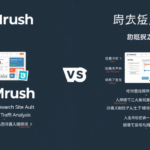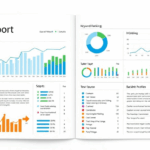Tracking Competitor Keyword Swings Without Losing Your Mind
Why Tracking Competitor Keyword Rankings Doesn’t Work Like You Think
Here’s the thing nobody wants to admit: keyword tracking tools give you the illusion of control, not actual clarity. I threw Ahrefs, Semrush, and SERanking at a competitor’s blog that was outranking mine for a tool-specific query I invented — and each one told a different story. Some said they dropped five spots; others still had them at #2, and Google Search Console? It still showed them buried on page six… but only on certain devices.
This isn’t a rant against tools—just a wake-up call that competitor keyword tracking depends almost entirely on randomized, highly-personalized SERP exposure. Google doesn’t hand out golden rankings anymore. Locality, login state, browser fingerprinting, device width—it affects all of it.
The behavioral bug? One day, Semrush sent me a trigger notification that a competitor dropped out of the top 10 for a phrase—I checked manually in Incognito across 3 proxies, and they were literally sitting at #5, bolded in featured snippet formatting.
Undocumented edge case I hit: if your target phrase is part of a People Also Ask result block, some trackers mistakenly see it as a drop because it falls outside main organic slots.
So yeah, even the best trackers are doing their best with the incomplete soup Google hands out.
The “Brand Lift” Ghost in Keyword Crawlers
I was auditing a competitor who rebranded from a really forgettable 3-word domain to a punchier monosyllabic brand. No major backlink builds. No new content. Nada. Within a week their long-tail keywords started climbing. And not just branded stuff—full phrases like “best budget home router” where they only hopped onto the SERP for one random review.
The discovery came from flipping through archived versions of their titles. Turns out their new brand name visually aligned better with user query intent. Google’s ML saw it as a more authoritative “answer provider”, even when the content was mostly unchanged.
Tracking tools won’t pick this nuance up. Keywords appear to move, but they’re experiencing brand lift as a side effect of query-user sentiment and improved entity association.
What fixed my confusion? Looking at their GMB data. Suddenly, I spotted a leap in unbranded impressions that correlated with the week of the rebrand. Tools weren’t lying—they just weren’t asking the right question.
Comparing Mobile vs Desktop Keyword Movements Invisibly
About eight months ago, I got pulled into a weird situation where a client’s competitor showed up for all the same terms—but only on desktop. Their mobile ranks remained frozen. It wasn’t local differences; I combed through proxies across cities, flushed cache, toggled user-agents—you name it.
Turns out mobile-first indexing doesn’t always mean mobile-first ranking visibility. One of the biggest behavioral oddities I hit: if a competitor’s CSS delivery is brutal (inlined garbage), their page gets ghosted from mobile results filter logic, but still appears on desktop.
Not documented anywhere I could find. A helpful MDN CSS spec rabbit-trail confirmed the problem wasn’t syntax—it was rendering cost. Page rendered in 6s+ on mid-range devices = mobile SERP decay.
This really messes with keyword rank trackers because most run desktop agents by default. If you’re not explicitly separating tracking zones per device class, you’ll only see half the story—and your competitor looks either fine or tanking wildly depending on your setup. There’s no “unified truth.”
Backdoor Keyword Discovery via Dynamic Sitemap Monitoring
Okay, this one feels like cheating a bit, but here’s something I’ve been doing for months now: I run daily diffs on competitor sitemaps.
What you need:
- A basic cron that pulls and hashes their sitemap index URLs
- Regex filters to catch new individual sitemaps (not just blog updates)
- Compare new URLs with Wayback backups to trace where keyword shifts are aimed
99% of SEOs eyeball changes to visible blog content. But when a new sitemap for “/comparisons/” goes live unannounced? That’s your signal they’re targeting mid-conversion commercial terms. I caught one competitor doing a sudden pivot to “review” and “vs” landing pages by watching their sitemap hierarchy quietly expand.
This gives you movement insight before trackers even catch rankings. It’s just reading between the xml lines.
Using Google Ads Preview to Trigger Actual SERPs by Location
Weirdly underrated: Google’s ad preview and diagnosis tool is not just for ad nerds—it’s the cleanest way to test SERPs by location without personalization sludge.
Here’s a real use case: I had a competitor dominating “solar install financing” in Colorado but nowhere else. Their content had no geotags, no schema, no location signals. Ranking made no sense. So I ran their primary query through the ad preview tool—set it to 80525, mobile Safari agent—and it showed they were in position #3.
Now here’s where it got interesting. When I geolocated the site IP, it wasn’t hosted in CO. But—aha—it turns out their schema buried a regional deal code in JSON-LD for only one state. That’s enough. Google made the leap, and the ad preview tool revealed it. Trackers didn’t display this at all because they weren’t simulating regioned queries.
“positionEstimatedLocation” in result logs: if that ever turns up in your scraping stack’s debug, it’s a goldmine. Google inferring location-based ranking.
One Surprising Win from Monitoring Keyword CTR Shifts Instead of Positions
This one flipped a switch for me. For months I tracked whether we were catching up on “homelab NAS box” vs two bigger guys in our space. We hung near the #4-6 rankings perpetually. It was demoralizing. Then I opened Search Console’s Performance tab, filtered by the keyword, and looked at CTR year over year.
That’s when I noticed we jumped from sub-1% to almost triple digits. Same rank. Same content. Very different snippet layout. Featured images started showing. Meta title truncation cleaned up. And our domain was appearing below a double indentation cluster of our competitor—making us seem “recommended” by Google within the structure.
CTR beat rank that month. And best part? Keyword trackers had no clue. They said nothing moved. Because the position didn’t.
When Competitor Keyword Gains Are Artifact Junk (And Still Show Up in Tools)
This happens way more than it should. One of my clients panicked because an old forum competitor suddenly showed up in rank tracking at position 9 for dozens of high-effort buyer terms. But when I dug in manually—none of it added up.
Turns out they’d enabled a new tag system that generated auto SEO title duplicates every time someone created a forum thread with words like “best” or “review”. Google tested those for freshness. Tools caught the URLs and marked them as ranking. Neat, right?
But 5 days later, Google cleared all of them out. Soft 404 classifications swept through Search Console. Keyword movement vanished. Every tool still listed those pages as “ranking last week”—based entirely on week-old snapshots.
Lesson: A bunch of temporary experiments in forums, Shopify blogs, or WordPress post tag loops create keyword ranking vapor that still clogs tool reports. You need human eyeballs to smell the artifact.













